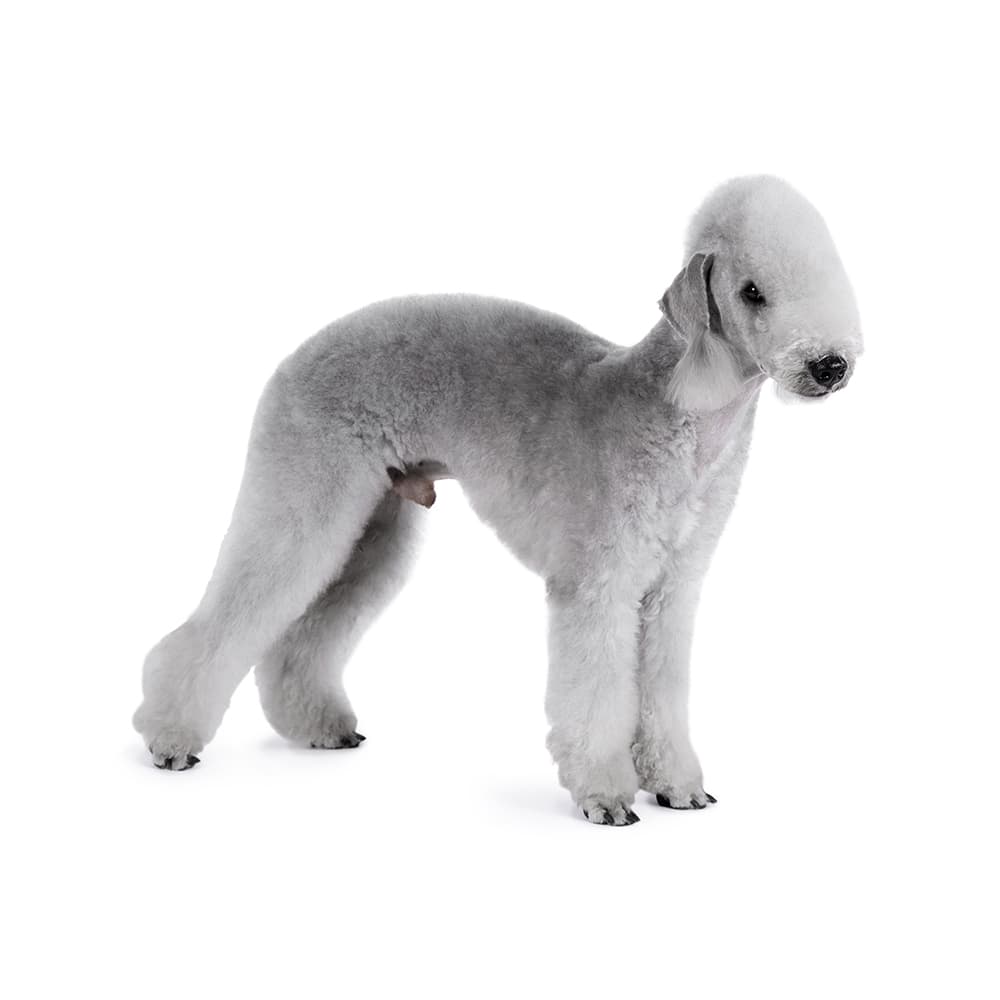Discover your dog's connection to this breed and 200+ others


Discover your dog's connection to this breed and 200+ others



Bedlington Terriers, named after the mining town of Bedlington, Northumberland in Northeast England, originated in the early 19th century. They were originally bred to hunt vermin in mines but eventually became popular as a companion dog for the upper class. The Bedlington Terrier has a distinct appearance, resembling a lamb, but despite this cute facade, it was a capable hunter and worker in its early days. The AKC describes Terriers as “clever, feisty and fearless,” and the Bedlington is no exception. They were bred to hunt and kill vermin, which means they often exhibit a high prey drive.
Bedlington Terriers can suffer from eye conditions, including cataracts, corneal dystrophy, entropion, glaucoma, keratoconjunctivitis sicca, retinal dysplasia, persistent pupillary membranes, and progressive retinal atrophy. They can also be affected by atopic dermatitis, chronic inflammatory hepatic disease, copper hepatopathy, cryptorchidism, deafness, distichiasis, elbow and hip dysplasia, epilepsy, exocrine pancreatic insufficiency, hyperadrenocorticism, hypothyroidism, imperforate nasolacrimal puncta, microphthalmia, oligodontia, osteogenesis imperfecta, patellar luxation, and renal dysplasia. Genetic testing is recommended, including for the following additional conditions: hyperuricosuria, degenerative myelopathy, and progressive rod-cone degeneration.
Bedlingtons are known for their playful, affectionate nature, and their high intelligence. They are known to be good with children and can be friendly with strangers, although like many terriers, they can sometimes be aggressive towards other dogs. Bedlington Terriers are energetic and require a moderate amount of daily exercise to stay healthy and content. Despite their playful and energetic nature, they are usually quiet indoors. They are also known to be good swimmers.
These dogs are often described as having a dual personality; they're gentle and relaxed at home but lively and fast when engaged in outdoor activities. They are highly adaptable and can do well in various living situations, from apartments to houses with yards, as long as they get enough physical and mental stimulation.
Being a terrier breed, they may have a tendency to chase after small animals due to their high prey drive, so they require training from an early age to control this instinct. Their intelligence makes them relatively easy to train, but it also means they can get bored easily if not properly stimulated.
A canine genetic lineage is a group of individuals or entire breeds that descended from common ancestors predating modern breed formation. Often these lineages are associated with a ‘type’ of dog with a unique historical working role and associated behaviors (e.g., herding, scent hunting, etc.).
Terriers were bred to hunt pests like rats, foxes, and badgers. Terriers are tenacious and fearless with high energy levels, strong prey drive, and feisty temperaments which all help in their hunting abilities. Terriers were used as mighty hunters in both urban and rural settings. Terriers have natural hunting instincts and protective tendencies.
Example breeds with ancestry from this lineage include Jack Russell Terrier, Scottish Terrier, and Yorkshire Terrier.
The American Kennel Club (AKC) calls the Bedlington Terrier a "lithe, energetic Englishmen".
The AKC also reveals that the first dog identified as a Bedlington Terrier was bred in 1825. His name was Piper, and he was still dispatching badgers at age 14, when he was nearly blind and toothless.
England’s National Bedlington Terrier Club formed in 1877, and in 1886 the AKC registered its first Bedlington.
The Bedlington earned the nickname “Gypsy Dog” due to their use by the Romani people as poaching partners.
https://www.petmd.com/dog/breeds/c_dg_bedlington_terrier
https://www.akc.org/dog-breeds/bedlington-terrier/
Recommended by top vets with decades of experience
21 breeds
64 genetic health markers
50 genetic trait markers
